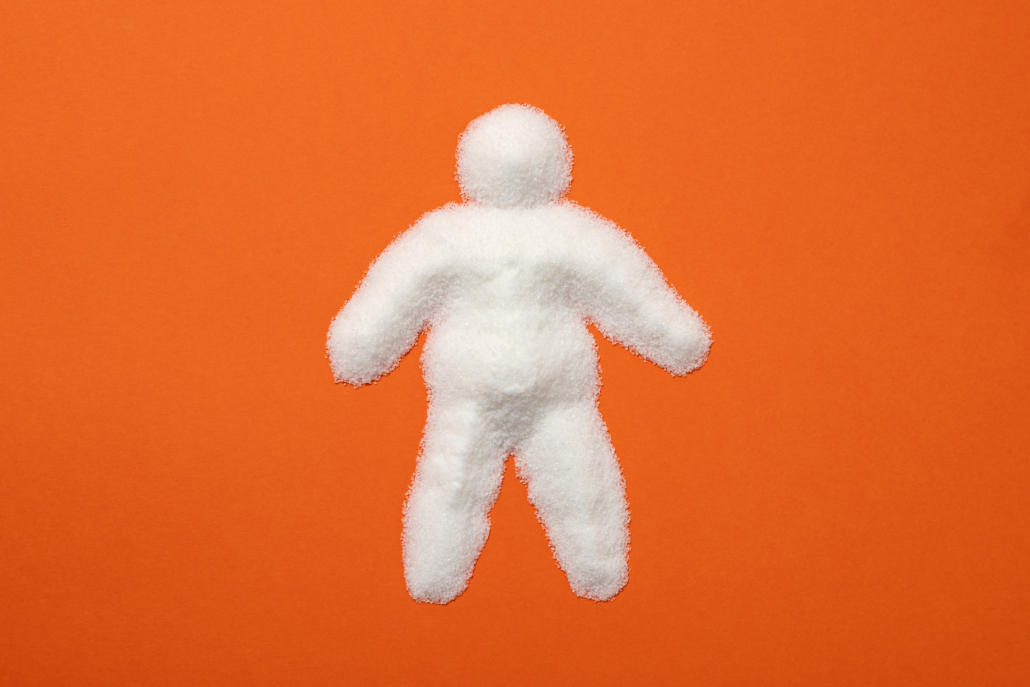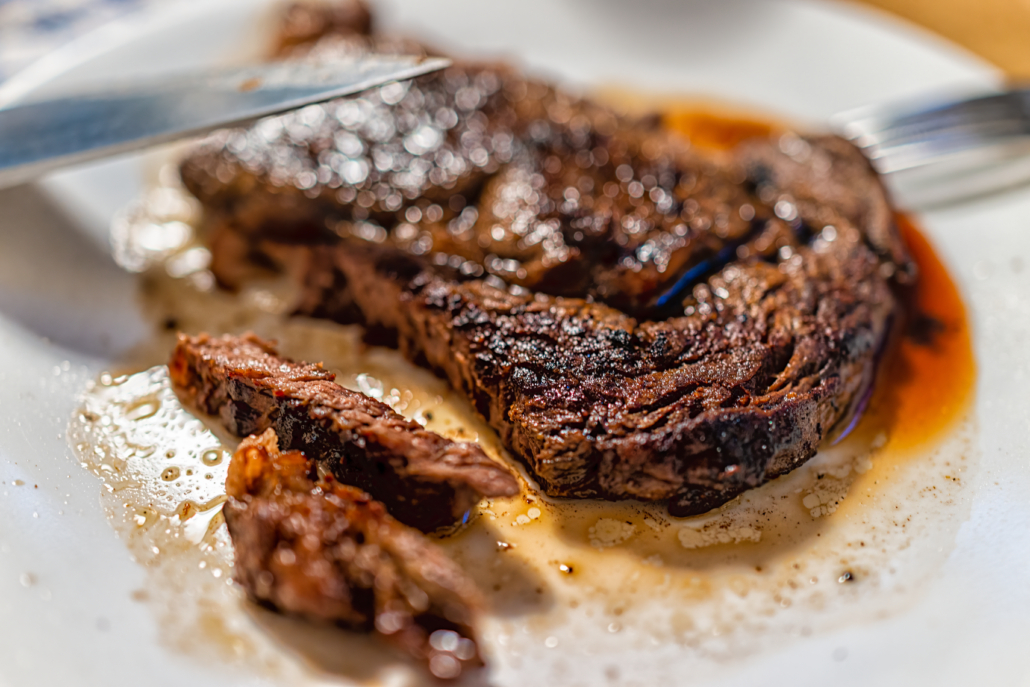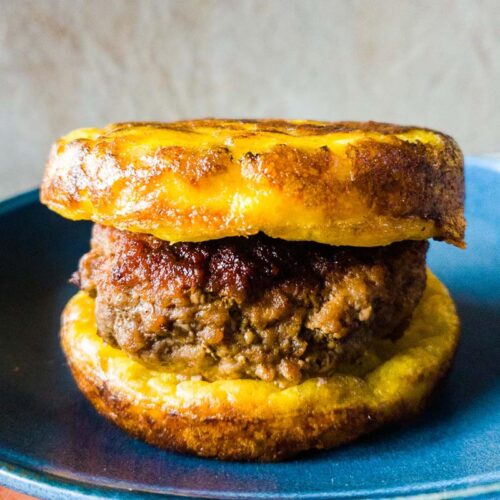We include products in articles we think are useful for our readers. If you buy products or services through links on our website, we may earn a small commission.
Carnivore vs. Keto: 9 Reasons Why Carnivore Is King
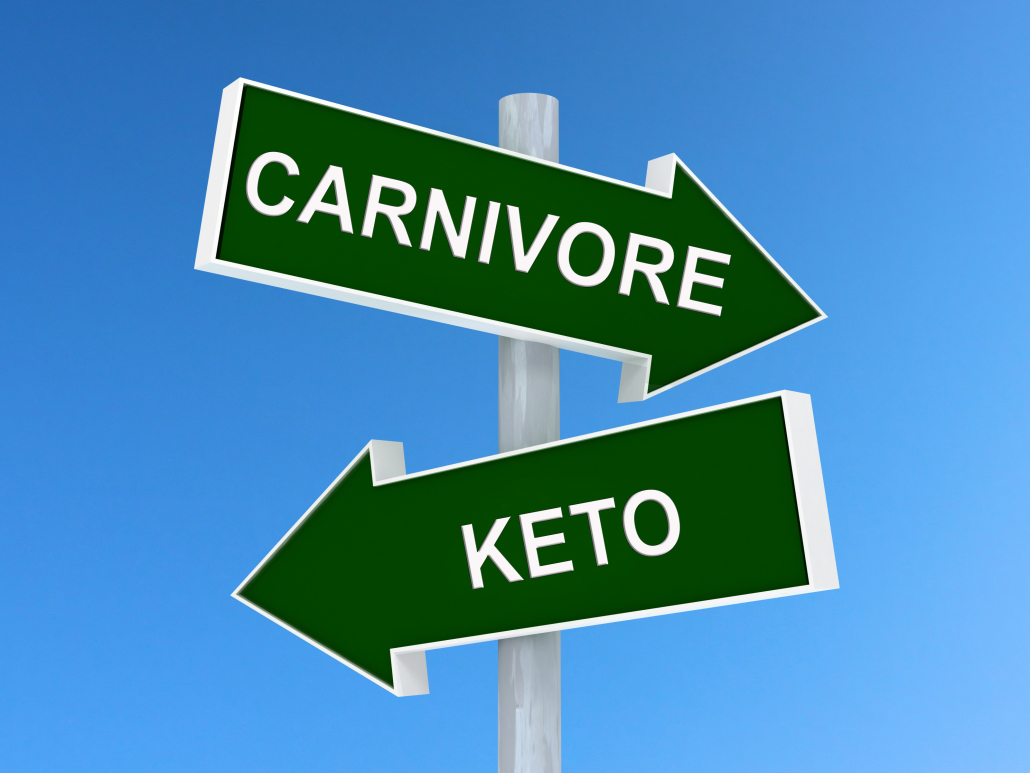
The question of Carnivore vs keto compares two closely related diets that have very important differences.
Both Carnivore and Keto aim to correct a mismatch between our ancestral physiology–forged over 2 million years of evolution–and our modern food systems, which have only been around for less than 100 years.
Both diets aim to provide our bodies with fatty, nutrient-dense foods while eliminating high-carb and processed foods that harm our health. But when it comes to Carnivore vs. Keto, one approach stands above the other.
In this article, we’ll explore the question of carnivore vs. keto by looking at 9 key differences.
Carnivore vs. Keto, What’s the Difference?
Both keto and carnivore are low-carb high-fat ways of eating. In fact, the carnivore diet can be considered a version of keto. Both approaches require getting most of your calories from fat.
But on carnivore, there is much more of a focus on where you get that fat from, namely meat.
What is Keto?
The ketogenic diet (keto for short) means limiting carbohydrate intake to around 20 grams per day while consuming adequate amounts of protein and lots of fat.
People often define keto by its macro percentages, and not by the specific foods you eat. These ratios usually break down to around:
- 70-80% of calories from fat
- 15-30% calories from protein
- 0-10% calories from carbohydrates
What is Carnivore?
A carnivore diet calls for eating only animal products. There are different approaches to carnivore, some are all-meat, like the lion diet, while other versions make exceptions for full-fat dairy.
It’s critical to note that for most modern people coming from a standard American diet, “meat” means lean muscle meats, or protein, on a carnivore diet, meat refers to fatty meat and animal fats.
Our ancient ancestors and modern carnivore-informed doctors like Dr. Kiltz, prize fatty meats, and supplementation with extremely nutritious organ meats. Dr. Kiltz recommends duck liver and beef liver which are both high in meat specific nutrients like vitamin A, and K2
In fact, there is abundant evidence that humans are really “lipivore-carnivores”. Our ancestors specialized in hunting large fatty animals, and our modern physiology is primed to thrive on animal fats–more on this later.
What Can you Eat on Keto?
To further differentiate keto from carnivore, let’s look at what you can and can’t eat on each approach, beginning with keto foods.
A well-formulated keto diet is centered around keto meats like fatty cuts of steak, and other high-fat foods like keto cheese, fatty fish, and seafood. But it also allows for non-animal foods like low-carb vegetables and fruit.
Because keto only explicitly calls for cutting carbs and boosting fat, some people take liberties and allow for inflammatory vegetable oils and low-carb processed foods. Junk foods marketed as “keto friendly” are a growing trend.
Here’s a comprehensive list of the foods allowed on keto:
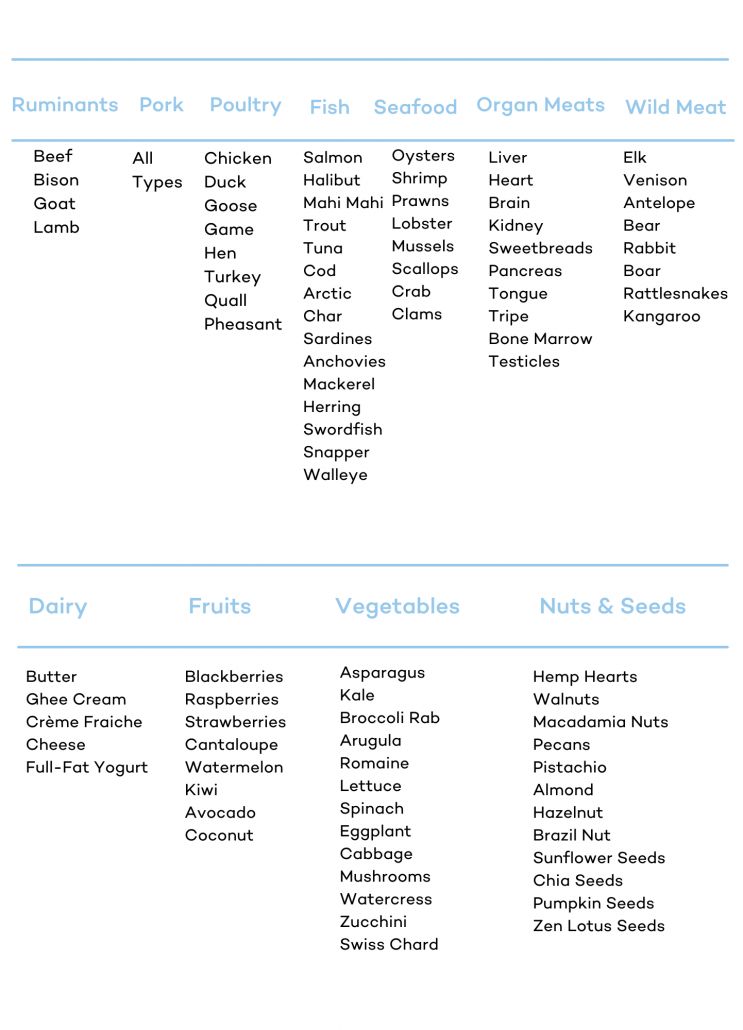
What Can you Eat on Carnivore?
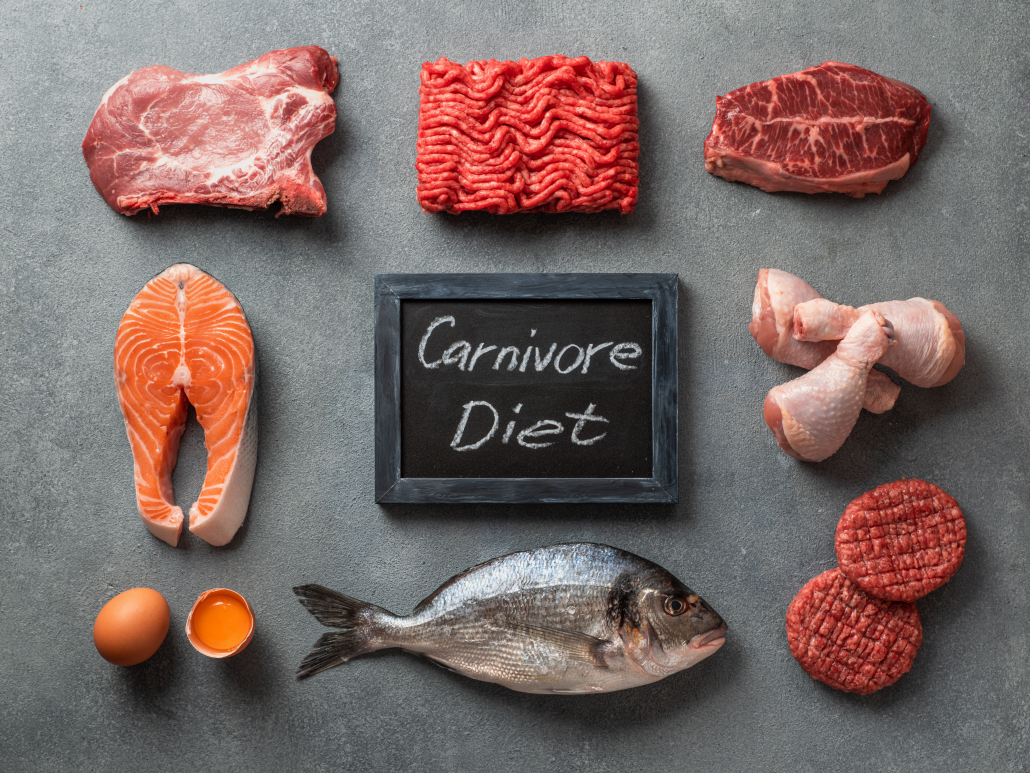
There are different types of carnivore diets that have different carnivore food lists. They range from the most restrictive lion diet, which is just red meat, salt, and water.
Most people practice some variation on the standard carnivore diet which revolves around ruminant meats, with the addition of pork, seafood, and dairy. Together these foods constitute the healthiest foods in the world.
The nose-to-tail carnivore diet brings in the regular eating of organ meats like sweetbreads and liver.
| Ruminants | Pork | Poultry | fish | seafood | Organ meats | Wild meats | fat | Eggs | Dairy | Fruits and Veggies |
| Beef Bison Goat Lamb | All types | Chicken Duck Goose Game hen Turkey Qual Pheasant | Salmon Halibut Mahi-mahi Trout Tuna Cod Arctic Char Sardines Anchovies Mackerel Herring swordfish Snapper Walleye Catfish | Oysters Shrimp Prawns Lobster Mussels Scallops Crab Clams | x | Elk Venison Antelope Bear Rabbit Boar Rattlesnake Kangaroo | Tallow Lard Butter Ghee | Chicken eggs Duck eggs Goose Eggs Ostrich eggs Quail Eggs | Butter Ghee Cream Creme Fraiche Cheese Full-fat yogurt | x |
Five Reasons Why Carnivore is King
When it comes to carnivore vs keto, carnivore comes out on top.
The superiority of carnivore has to do with two key point:
- The Carnivore diet is most closely aligned with the diet humans evolved to thrive on
- The carnivore diet eliminates plant and junk foods that humans were not designed to eat
Let’s look at how carnivore vs keto plays out in each of these areas.
1. Most Closely Aligned with Ancestral Eating Patterns
For the vast majority of human history, our ancestors were at the top of the food chain, and consumed carnivorous diets of meat from large mammals.
Until very recently on the clock of human evolution, the world was teeming with fatty megafauna like 1 ton chinchillas and elephants that were twice as big as they are now.
Researchers like Miki Ben-Dor and Amber O’Hearn make a convincing case that our cavemen ancestors ate focused almost exclusively on eating these massive animals. This makes sense when considering they provide the largest return on investment when it comes to calories gained from calories burned hunting them. There’s no nutritional or energetic reason to seek any other food.
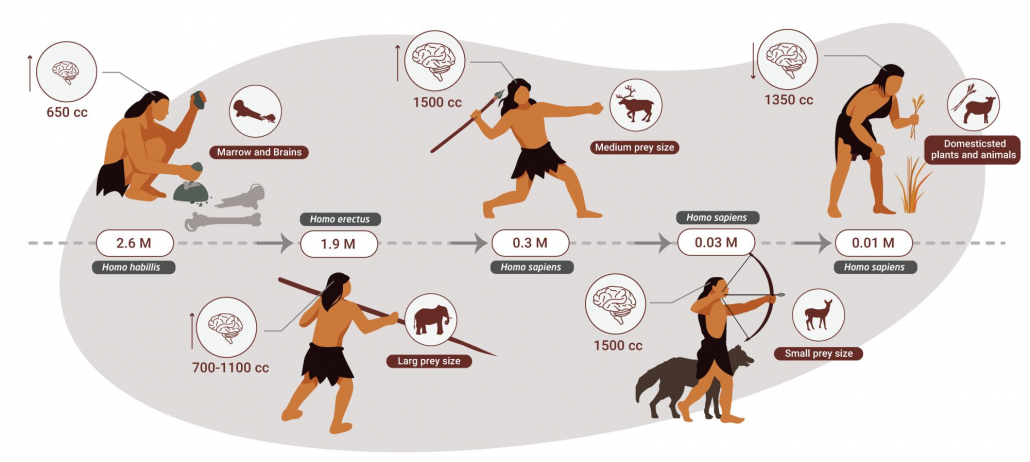
Source: Dr Miki Ben Dor
In the context of human dietary evolution from fossil records we clearly see that the human brain exploded in size when we first learned how to scavenge fatty meats from bones left over by other predators. With bigger brains we were able to fashion tools and coordinate hunts for giant prey.
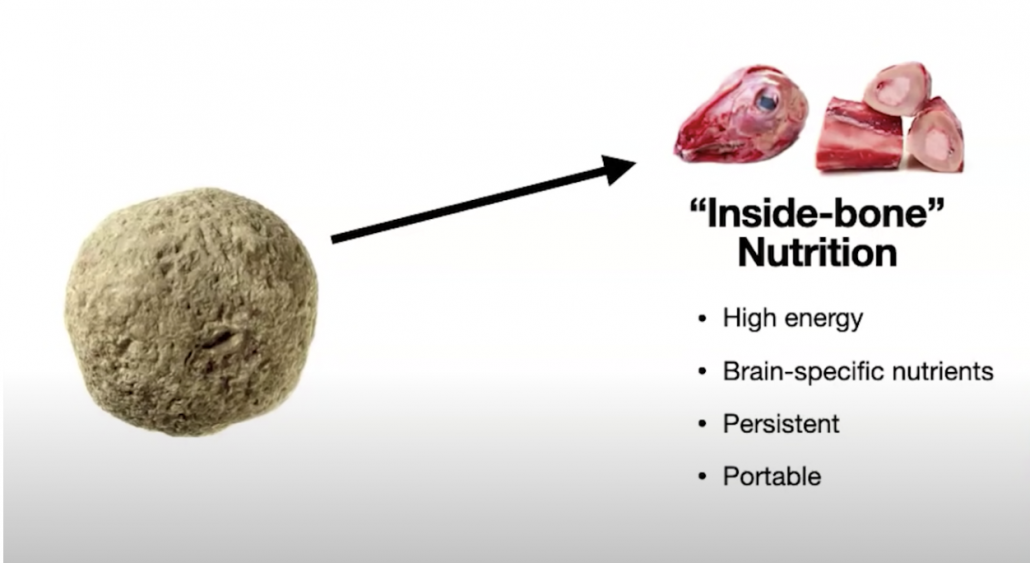
Source: Amber O’Hearn
As we learned how to become “fatavores” our primate bodies underwent major metabolic changes that we modern humans have inherited.:
- We have a unique propensity to store fat (as energy) on our bodies
- Our closest primate relatives have more than ½ of the digestive tract devoted to the colon and cecum where plant matter is fermented into fatty acids. But humans have a much smaller colon and very small cecum. We don’t have the ability to ferment fiber into fatty acids in any significant way, so we have to get it from animal fat
- Our stomach acidity is higher than that of other carnivores like cats and dogs and equal to that of some scavengers.3 High stomach acidity allowed humans to scavenge and eat large animals over a period of days and weeks even as pathogens accumulated in the meat
In short, we are designed to consume and thrive on animal fats just as our ancestors did for nearly two million years.
We can see the legacy of human carnivory in traditional cultures that still thrive on carnivore diets.
- Pre-contact with the West the Inuit of the Canadian arctic enjoyed a diet of seal, walrus, whale, and fish.
- The Maasai of Eastern Africa consume a diet based around meat, butterfat from cows milk, and cows blood.
These traditional populations and many others show far superior markers of health when compared to people consuming Western diets. And they show extremely low incidences of diseases that kill more people globally than any others. Known as the diseases of civilization, these include:
- heart disease
- hypertension
- type 2 diabetes
- epithelial cell cancers
- inflammatory diseases (including autoimmune diseases, bowel disorders, osteoporosis, infertility, and more)
Virtually non-existent in traditional societies that eat a whole foods diet based around animal products, these diseases can all be attributed to modern dietary and lifestyle factors.
A carnivore diet allows only the foods that most closely resemble those that our ancestors evolved consuming while eliminating all nutritionally inferior foods.
Keto, on the other hand, doesn’t make any distinctions between traditional foods and modern processed foods as long as they’re low-carb and high in fat.
2. Carnivore Eliminates Plant Toxins and Antinutrients
We’ve been brainwashed into thinking plants are healthy and even essential. But the fact is that nearly all fruits and veggies that we consume today did not exist for our hunter gatherer ancestors.
There’s good reason that plants were not a part of our ancestral diet—they’re full of plant toxins and antinutrients that can harm humans.
Most plant foods require intensive processing and heating with fire to eliminate their toxins and break down starches into digestible carbs. Processing takes time and energy, which would have been better spent hunting fatty animals. It also requires fire, which didn’t come on the scene until 300,000 years ago, too late to have caused major changes in our metabolic predisposition for carnivory.
All plants, even those we’ve tamed enough to consume, still contain thousands of different plant defense mechanisms like naturally occurring pesticides, phytohormones, and antinutrients.
In fact, researchers estimate that we consume about 1.5 grams of natural pesticides every day. This works out to nearly 10,000 times more natural pesticides than synthetic compounds.
In addition to chemical defenses, many plants contain antinutrient compounds that inhibit digestive enzymes and block out minerals resulting in nutrient deficiencies and intestinal permeability AKA “leaky gut”.
A carnivore diet eliminates exposure to all plant toxins and antinutrients, while a keto diet allows for numerous plant foods so long as you stay within your carb limits.
Though keto reduces exposure to plant toxins for most people, when it comes to carnivore vs keto, carnivore does a better job of protecting our bodies from plant-based chemical warfare.
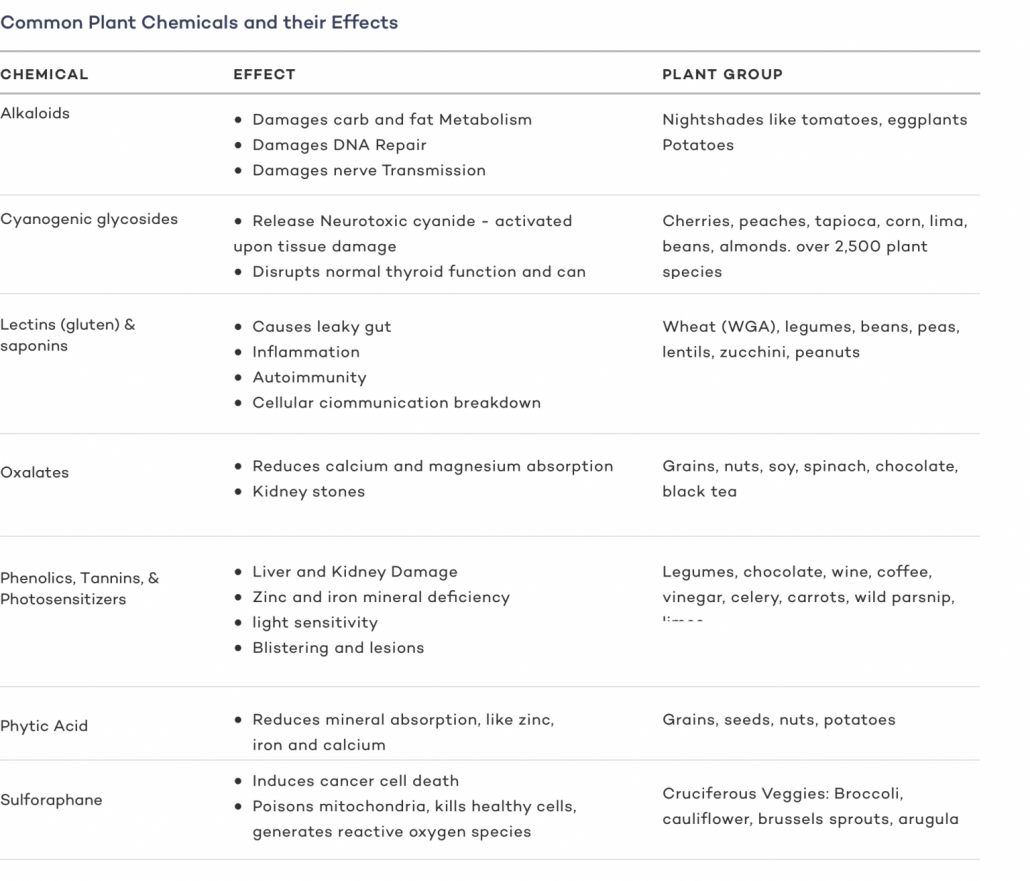
3. Carnivore Eliminates All Seed Oils
Though many people who practice keto are aware of how incredibly unhealthy vegetable oils are, keto itself does not restrict “vegetable” and seed oils.
Numerous studies suggest that industrial vegetable oils are a driving force behind heart disease, various cancers, and numerous inflammatory and metabolic disorders.
Vegetable and seed oils have been shown to cause :
- oxidative stress
- inflammation
- mitochondrial dysfunction
- genetic damage
In fact, only morbid obesity and heavy smoking have a greater effect on mortality than vegetable oil. And since we know that vegetable oil consumption is a major factor in obesity, it’s accurate to infer that vegetable oil is the most dangerous lifestyle factor in our modern lives.
Keto doesn’t cut out vegetable oils. Only a carnivore diet completely eliminates exposure do vegetable oils.
4. Carnivore Supplies our Bodies with Only Healthy Fats
When considering fat intake, a carnivore diet is superior to keto. And not just because of the vegetable oils that it eliminates, but equally because of the healthy fats that it provides.
Animal fats are mostly composed of saturated and monounsaturated fatty acids, with less than 4% polyunsaturated fatty acids (PUFA) . By contrast, most vegetable and seed oils are majority PUFA– it’s these PUFAs that make vegetable oil so unhealthy
Common animal fats on the carnivore diet include:
Animal fats have been shown to 9 :
- Be highly satiating, reducing desire to snack and protecting against excess weight gain
- Support cardiovascular health
- Protect the liver
- Support Healthy Cell and Brain Function
- Support infant development
- Provide fat-soluble vitamins
- Provide many healthy animal-specific fatty acids like CLA, and stearic acid
Despite the demonization of animal fats since the 1960s modern studies tell us conclusively that there is no real association between consuming animal fats and cardiovascular risk factors.
Though animal fats play a key role in most approaches to keto, animal fats are the superstars of the carnivore diet.
5. Carnivore Eliminates Fiber
Since keto allows for plant foods, it allows for fiber. While the carnivore diet cuts out plant foods, and therefore eliminates almost all fiber.
You might be wondering how this could be a good thing. After all you’ve been told that you need fiber, that you’ll be constipated, and that it cleans your bowels and reduces cholesterol. But the reality is that these are just fiber myths.
Modern research is revealing that dietary fiber is often unnecessary. And it may even be harmful.
A study in the World Journal of Gastroenterology found that “the previous strongly-held belief that the application of dietary fiber to help constipation is but a myth. Our study shows a very strong correlation between improving constipation and its associated symptoms after stopping dietary fiber intake.”
Research has also revealed that excess insoluble fiber can act like an antinutrient when binding to iron, zinc, magnesium, and calcium, preventing their absorption.
Other research has found that eliminating fiber for just two weeks can lead to a significant reduction in symptoms IBS and constipation.
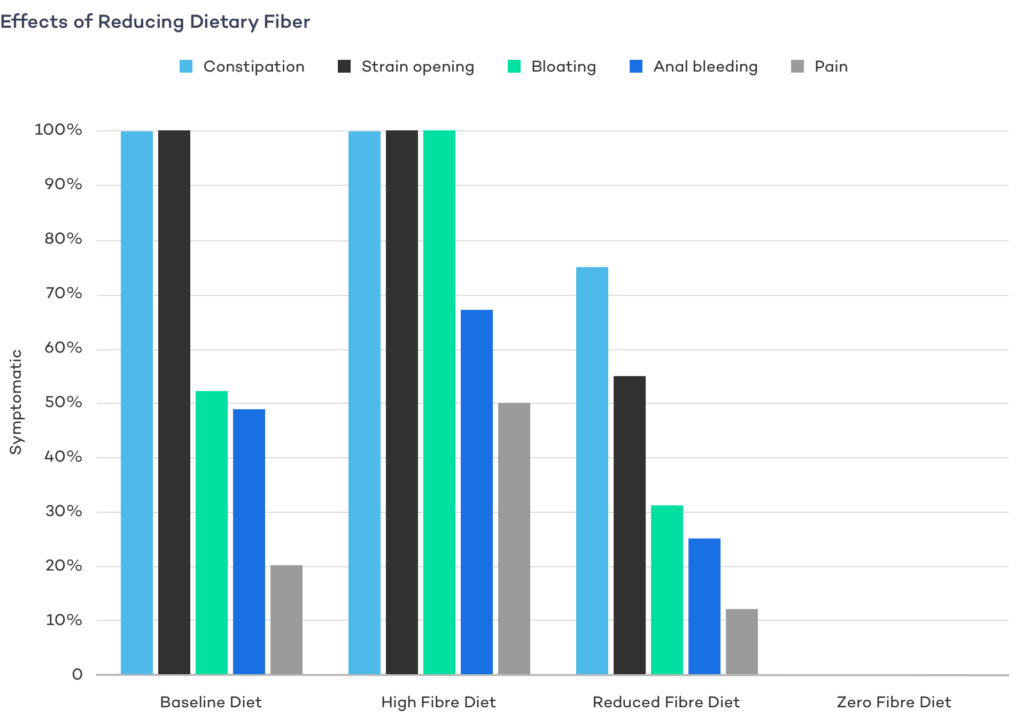
The modern research telling us that fiber is unnecessary makes total sense in the context of our ancestral carnivorous diet.
When we learned how to eat fatty animals we lost the need, and therefore the ability to ferment fiber into fatty acids. It’s important to realize here that our primate ancestors and other herbivores have digestive systems that actually ferment fiber into fat–we’re all fatavores. But humans learned how to get more energy by simply eating the animals that eat the fiber.
Digestion takes a lot of energy, and by eating fatty animals we freed up the energy that went to digesting plants and used it to feed our growing brains.
The foods and fiber we’re “supposed” to be eating in abundance create a constant slurry of inflammatory junk. When I examined the studies exploring the benefits of fiber and vegetables, I wasn’t surprised to find that there is zero evidence demonstrating the benefits of fiber for bowel health. What we do know for certain is just how little we actually know about our complex and delicate digestive system. And this is yet another reason why I find the mainstream diet recommendations so troubling.
My observations as a fertility doctor lead me to believe that the constant sugar and fiber fermenting in our bowels spreads inflammation to tissue and organs throughout the entire lower abdominal region, including our tubes, ovaries, uterus, prostate, seminal vesicles, and testicles. It bears emphasizing that in the majority of cases I treat, infertility is an inflammatory disease! And inflammation doesn’t stop in the lower abdomen. Destructive plant antigens—naturally occurring vegetable compounds that attack healthy human cells—and glucose are micronized in our gut and deposited through the blood stream to every organ in our bodies.
6. Carnivore is Easier to Follow
When it comes to ease of use, carnivore vs. keto is no contest. Carnivore is king.
Carnivore diet foods, though surprisingly various, focus your choices on fresh fatty meat.
Far from restrictive, these foods are so nutrient-dense and satiationg, that they are ultimately liberating.
Eating one or two large carnivore meals a day frees up time, energy, and mental space to focus on every other aspect of life like relationships, time spent in nature and creativity, personal growth, and career goals.
7. Carnivore is Exclusively Whole Foods
Carnviore means eating only whole animal foods, while keto allows for processed and plant-based foods as long as they conform to keto macro percentages.
Have you ever looked at the ingredients of those store-bought keto ice creams? Here’s an example from the popular Halo Top brand:
Ultrafiltered Skim Milk, Cream, Erythritol, Peanut Oil, Inulin, Eggs, Vegetable Glycerine, Cocoa Powder, Water, Soluble Corn Fiber, Skim Milk, Contains 1% or less of Natural Flavors, Unsweetened Chocolate, Cocoa, Milk Protein Isolate, Cocoa Processed with Alkali, Monk Fruit Extract, Sunflower Lecithin, Salt, Stevia Leaf Extract (Reb M), Carob Bean Gum, Cellulose Gel, Cellulose Gum, Annatto Extract for Color.
What the hell is all this stuff?
One of the great things about the carnivore diet is that when you’re tempted to cheat you’re coming from a place of remarkable dietary purity. This makes processed foods feel very foreign, and accurately, not really like food at all, and therefore unappetizing.
In short, the purity of a carnivore diet makes it easier to completely change your eating habits and leave processed foods behind.
But this doesn’t mean that you can’t cheat at all!
Dr. Kiltz himself cheats with his homemade keto ice cream. It has only a very small, harmless amount of plant-derived sugar. Here’s the recipe and a video that will help you follow along.
Ingredients:
- 1 Pint of High-quality heavy cream (preferably grass-fed)
- 1-2 TBSP of granulated pure cane sugar (13 grams sugar per tablespoon)
- 1 Tablespoon pure vanilla extract (can use vanilla bean scraped as well)
- 1 egg (organic preferred)
- 1 tsp sea/Himalayan salt (optional but highly recommended)
Follow the directions of your specific ice cream maker.
8. Easier to Eliminate Sugar on Carnivore vs. Keto
All plant foods are mostly carbs and water. So on a carnivore diet, when you’re eliminating plant foods you’re eliminating sugar.
On keto it’s easy to overdo the sugar without eating anything sweet. For instance, a popular restaurant market salad contributes 41 grams of carbs.1 That’s more than a can of cola (39 grams carbs).
It’s not the big glycemic bursts that are the issue–in fact our susceptibility to sugar binges points to the fact that on rare occasions when our ancestors encountered a fruiting tree we were supposed to eat all the fruit we could, and store the excess calories as fat.
Highly mis-aligned with our physiology is the constant drip of carbs along with plant toxins that subjects our bodies to chronic low-level exposure to inflammatory sugars and toxins.
9. Carnivore Lowers Risks of Bacterial Exposure vs. Keto
By eliminating plant foods on the carnivore diet–even low-carb veggies and fruits—we’re protecting ourselves from contamination with harmful bacteria like listeria, E. coli, and Klebsiella.
A 2016 study found that of 105 samples of imported fresh fruits and vegetables 60% of fruits and 91% of vegetables carried potentially harmful bacteria.
- 20% of fruits and 42% of vegetables had Enterococcus.
- 22% of fruits and 7% of vegetables had E. coli and S. aureus
- 21 other species of bacteria where identified with E. coli, Klebsiella pneumoniae, Enterococcus casseliflavus, and Enterobacter cloacae as the most abundant species3 [28]
A 2021 review found that “raw consumption of many fresh leafy and non-leafy vegetables, root vegetables, sprouts, and fruits results in the exposure of humans to foodborne bacterial pathogens, including antibiotic-resistant bacteria (ARB) 6]. In recent decades, exposure to antimicrobial-resistant pathogens through the food chain has increasingly been reported to cause foodborne disease outbreaks.
The presence of ARB (antibiotic resistance bacteria) and ARGs (antimicrobial resistance genes) in fresh produce and salads consumed raw poses potential public health risks of unknown magnitude. Preventing ARB/ARG exposure through fresh produce may be challenging considering the cross-cutting issues related to food security and food safety…”
For these reasons Dr. Kiltz strongly recommends that his patients stop consuming fresh vegetables.
Though keto is a good entry point for high-fat low-carb eating, when it comes to carnivore vs. keto, I recommend carnivore.
A carnivore diet calls for eating only the most nutritious foods on earth. It aligns out eating habits with the physiology that we inherited from our ancestors, who were themselves carnivores for the vast majority of human evolution.
By going carnivore you cut out all modern industrial foods, including seed oils that are allowed on keto. In this way, carnivore protects your body from plant toxins, antigens, and inflammatory PUFAs. At the same time, you’re nourishing every cell of your body with the animal fats and proteins we were designed to thrive on.












